How to choose ski boots
Competitive skiing, basic skiing, synchronized skiing, or challenging cat jumping, each cyclist's ambition is different.
Choosing a pair of shoes will vary depending on the purpose and purpose of use.
It is also very important to choose a shoe with your own foot shape.
Point 1 Ski boots hardness and boot width
| Flexibility | Foot width | Liner boots | ||
| compe tition |
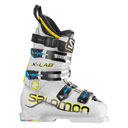 |
Very hard | Very narrow | thin |
| basis | 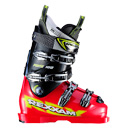 |
hard | narrow | thin ~ general |
| Free skiing |  |
general | width | general |
| general ordinary |
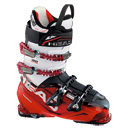 |
general ~ soft |
width | thick ~ soft |
| Female | 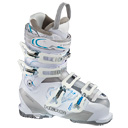 |
general ~ soft |
general ~ width |
thick ~ soft |
Point 2 Selected according to the purpose and use of the skier
Competitive ski bootsthe hardness is very hard and the width is very narrow.
Usually, the hardness is marked to be 120 to 150 and the width is about 93 to 98 mm.
In order to apply pressure to the skier in changing direction, the speed is faster because of the taxiing.
It is specially designed to withstand the centrifugal force exerted by the outside (the shoe is subject to various external forces and internal forces).
Why is the width so narrow?
The racing shoe itself is very small in design, and the inner boot itself is very hard and very thin.The racing shoe itself is very small in design, and the inner boot itself is very hard and very thin.
This is because the tight wrapping step, a little bit of power or pressure can be designed to convey the purpose of the snowboard.
Assuming that the inner boot is as fluffy and generous as the sponge, the pressure will be absorbed and the strength will not be exerted.
Basic skiing,I often listen to the skiing level, but in fact, it refers to skiing that wants to improve skiing skills.
Suitable for basic ski boots, the hardness is softer than the competition, and the width is slightly wider.
Usually, the hardness is marked as 100 to 130 and the width is about 98 to 100 mm.
Compared to the root race ski, the taxi speed will be worse, but the footsteps are more comfortable and easier to operate.
Pattern skiing (high-altitude rotation) or cat jumping should use the foot flexibly. Therefore, the hardness is designed to be 80-100, and the width is wider between 100 and 104 mm.
Some models have special design for absorbing vibration when the heel is on the ground. There are also snow boots with a pattern ski model that do not require a tight buckle, so there are also 2 buckles and 3 buckles.
As amateur, how do you choose ski boots for skiers who enjoy skiing purely?
Usually the hardness is 70 ~ 100, the width is 102 ~ 106mm……
The next one is the key!
The apron skier pursues a slipper that is comfortable and has no pain in the neck.
In this case, should we choose a soft hardness and a wide width?
The answer is: No
Try it on in a physical store and feel comfortable, but it's a different thing to skate on the snow.
When the knee flexes to apply an external force, but the hardness is soft, the large applied external force is not transmitted by the absorbing blade.
In addition, the heel is wiped when it is too wide to slide.
Pain in the feet for a long time. Therefore, the snow boots with a wide softness and wide width are comfortable but not suitable for skiing.
In this case, how to choose the snow boots that suits you?
On the whole, it is most suitable to wear snow boots (evenly pressed) that do not hurt and feel hold.
It is important to consider that the snow boots that are used more often will be weaker when they are evenly compressed before being crushed.
How tight it is, if there is no local pain on the toes, this snowshoe is the snow boots for your feet.
Our Osaka store specializes in measuring your footsteps and selecting several snow boots for you based on your size and level.
How to choose children's ski boots
Selection of children's ski boots
Please choose a pair of ski boots that are1cm longerthan the shoes you usually wear.
If you buy the same size as the shoes you wear in peace, it will be more crowded for the lower grades.
(Children who do not include competitive levels)
When choosing children's ski boots, the most important thing is the size.
Since children will grow very fast in 1.2 years, many parents want to buy larger size ski boots.
But this willaffect the child's technical improvement.Therefore, it is recommended to choose a shoe that is0.5 to 1 cm larger than the size of the shoes that are usually worn.
Generally, the shoes that are usually worn are 0.5 to 1 cm larger than the actual size of the feet, and the ski shoes are 0.5 to 1 cm longer than the usual shoes,
In this case, the ski boots are 1 to 2 cm larger than the actual size of the foot, and if it exceeds this range, it is not suitable for skiing.
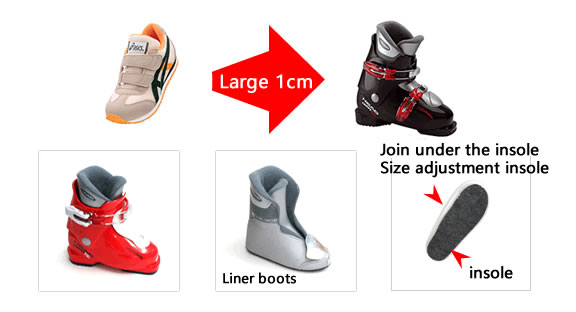
To the customers in the store, we will first provide you with several snow boots (the size of the usual size and the size of the larger one).
For consumers who buy online, it is recommended to choose snow boots from 0.5 to 1 cm in size.
If you find that the purchase is much larger, please cut the size of the insole into the pad.
(If it feels a little too big, take out the insole in the inner boot and then adjust the insole according to the size of the insole.
Then it's good to put the insole and size adjustment insole into the inner boot.)
When you grow up, take the size-adjusted insole and continue to use it.
If you don't know if the size fits, take out the inner boot and let the child try on it.
After the heel is aligned, press the toe to see how many gaps there are. If there is about 1cm, it is just fine.






